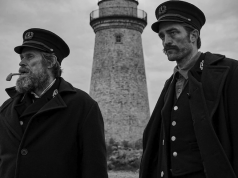[In theaters and Video on Demand.]
Even with its murky story and assorted other shortcomings, “The Congress” is a wildly original and memorable experience, the sort of movie that lodges itself in your head whether you fully understand it or not. Melancholic, thoughtful, and completely animated for half of its running time, the film looks at issues both broad (technology, self-image, the nature of the soul) and narrow (Hollywood’s treatment of actresses over 40, the assembly-line process by which most movies are made). It’s meta-referential, partially based on a Stanislaw Lem novel, loosely satiric, and vaguely disquieting. We’ve seen all of the film’s elements before, but this combination of them is heady and new.
Written and directed by Ari Folman (who made the poignant animated autobiography “Waltz with Bashir”), “The Congress” stars Robin Wright as a fictionalized version of herself, a once-promising actress and potential Hollywood A-lister who has faded into relative obscurity. Here she is the mother of two children, teenage Sarah (Sami Gayle) and young Aaron (Kodi Smit-McPhee), whom she lives with in a converted airplane hangar in the California desert. Aaron’s health problems have given Robin an excuse to drop out of public life and essentially abandon her career, which was floundering anyway because of her indecisiveness.
Her longtime agent, Al (Harvey Keitel), a paternal man with genuine affection for her, comes to Robin with an offer. Technological advancements now allow movie studios to “scan” an actor into a database — not just their physical dimensions but their emotions, voice, and delivery — and then use those bytes and pixels to create entirely new performances. An actor thus scanned can keep appearing in movies forever without doing any more work, all at the discretion of the studio that did the scanning and paid for the rights to the person’s image.
Robin is against the idea despite the massive paycheck being offered, but she eventually concedes, more because the story requires it than for any other discernible reason. The actual scanning scene, in which Robin must deliver a wide range of emotions while listening to a charming anecdote from Al, doesn’t quite hit the emotional mark it’s aiming for, but we get the idea.
Now we come to the real meat of the film, 20 years later, when the flesh-and-blood Robin is totally off the grid while the scanned Robin is a major action star. Technology has advanced to the point where people can ingest a drug that turns them into animated characters, either ‘toon versions of themselves or of other people. There are entire communities that are “restricted animated zones,” populated by people who have become cartoons (or who are sharing the hallucination of being cartoons, anyway). Robin attends a Futuristic Congress meeting being held in such a place, giving us a dazzling and surreal animated sequence that completely changes the direction of the film before bringing it back to where it started.
Folman takes us down a sci-fi rabbit hole into increasingly weird scenarios, painting the future as a series of scary hallucinogens and nonstop existential crises. What is real? What substantial difference is there, really, between experiencing something and just vividly imagining that you’ve experienced it, especially if the latter can produce the same memories and emotional scars? Movie Robin navigates these and other thorny questions delicately, the real Robin Wright’s strong, sympathetic performance keeping us fascinated even when we don’t quite grasp all the “rules” of this animated world. If nothing else, we can always relate to the character’s desire to protect her children in a world that’s gradually tearing down our real selves and replacing them with avatars.
B (2 hrs., 2 min.; )
Originally published at About.com.





